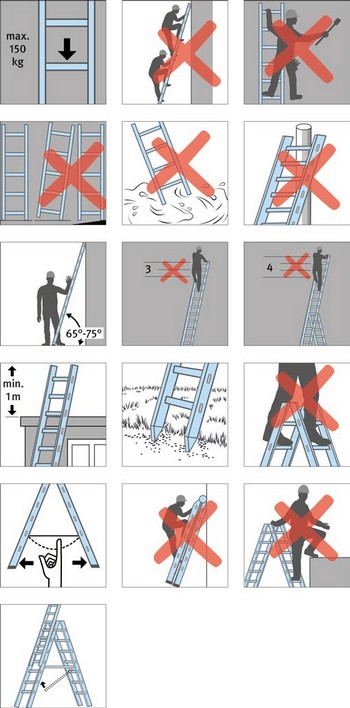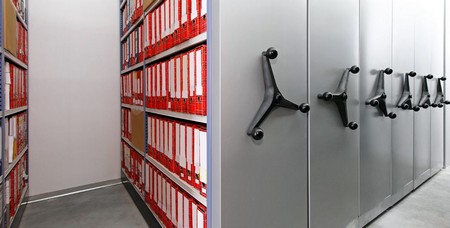Abschnitt 3.8 - 3.8 Storage areas
In the interests of smooth company operations, your employees must have the necessary work materials at their disposal at all times. For this reason, maintain a store of relevant work materials and an archive of documents on current and completed processes. Important information on safe operation of your stores and filing rooms is provided below.

 | Statutory references |
|---|---|
| |
 | Further information |
|---|---|
| |

Figure 31 Example of a pictogram: ladder
 | Hazards |
|---|
The following hazards to your employees may arise in storage areas:
Tipping of shelves and transport equipment
Collapse of shelves and transport equipment due to overloading
Falling of materials and objects
Falling from climbing aids (ladders, rolling step stools)
Trips and falls on the level
Pinch and collision hazards
Cut and stab injuries caused by knives and scissors
Fire hazards
 | Measures |
|---|
Ensure that your shelves are stable, for example by fixing them to the wall and ceiling or by connecting several shelves together in a suitable way. Instruct your employees to store heavy items on the lower shelves.
Ensure that the anti-tip interlocks of filing cabinets are intact.
Have transport equipment and shelves loaded such that the loads are distributed evenly.
Inform your employees of the maximum loading capacity of the shelves and transport equipment, and the proper procedure for loading them.
Protect integral lamps within reach (up to 2.50 m above floor level) in the storeroom against damage, for example by means of suitable shrouding.
Provide suitable climbing aids (e.g. ladders) and have their safe condition checked at regular intervals. Instruct your employees in use of the climbing aids.
Ensure that the circulation routes are clear and can be used safely. Provide circulation routes of adequate width (see Chapter 3.3.1) and ensure that materials (such as cardboard boxes) or work equipment are not left on circulation routes or where they encroach into them.
Ensure that adequate lighting is provided (see Table 12). Your employees must be able to find their bearings in the event of an emergency.

Figure 32 Model for shelving
Table 12 Minimum illuminance values with reference to ASR 3.4, Annex 1
| Working area in stores/filing rooms | Minimum illuminance value |
|---|---|
| Retrieval tasks in storerooms | 100 lx |
| Reading tasks in storerooms | 200 lx |
| Shipping and packaging areas | 300 lx |
Ensure that safety clearances are observed on moving shelving (e.g. finger pinch gap 25 mm). Instruct your employees on use of the shelving systems. Have the safety equipment (e.g. spacers) checked regularly.
Provide your employees with suitable tools (e.g. safety cutters) for opening packaging and instruct them in practical use of these tools.
Ensure that fires in your store or archive are detected quickly and the alarm for your employees raised without delay (for example by fire detectors).
Make suitable fire extinguishing equipment (e.g. water or foam extinguishers) available and provide your employees with practical instruction in its use.
